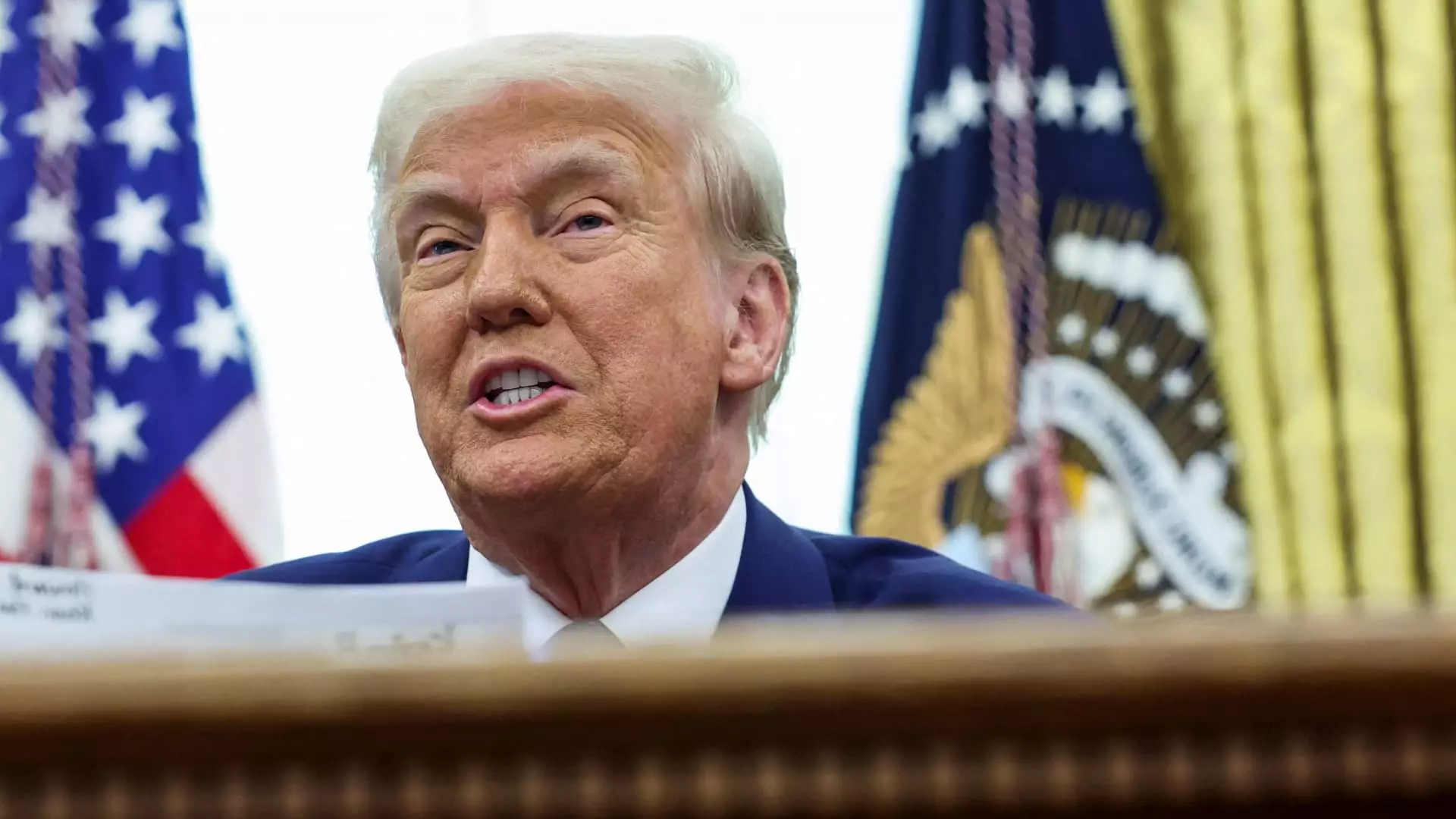The discussion surrounding national defense budgets remains a pivotal topic in U.S. fiscal policy, especially under the administration of President Donald Trump. Recently, remarks from Trump suggesting a potential halving of defense expenditures sent shockwaves through the market, illustrating the fragility and volatility within the defense sector. As companies like Lockheed Martin, Northrop Grumman, and General Dynamics witnessed sharp stock declines, the implications of these statements raise critical questions—what are the future directions of defense spending under Trump’s leadership?
On a notable Thursday, President Trump indicated that the United States could significantly reduce its defense budget during a discussion about military alliances and expenditures with global players like China and Russia. This sentiment was met with immediate market reactions, as defense stocks that were initially stable rapidly plummeted. Lockheed Martin saw a 1.5% decrease, whereas Northrop Grumman and General Dynamics each experienced a concerning 2.6% drop. Such market volatility underscores the sensitivity of defense contractors to political discourse, revealing how swiftly investor confidence can waver based on executive statements.
Trump’s history of fluctuating stances on military funding adds an additional layer of complexity to the landscape of defense spending. While his administration has sought to streamline government expenditures, utilizing figures like Elon Musk to highlight inefficiencies, there remains a parallel narrative that emphasizes a strong military presence. The president has continuously reiterated the necessity of a robust armed force, even signing orders aimed at advancing initiatives like the proposed “Iron Dome of America.” This duality creates a climate of confusion, prompting market analysts and policymakers alike to grapple with the underlying message: is the U.S. prioritizing defense or seeking austerity?
Expert Opinions on the Future of Defense Budgets
Market analysts such as Roman Schweizer from TD Cowen have pointed out that the disarray surrounding defense policy is leaving many stakeholders perplexed. As many details surrounding future spending priorities remain vague, experts caution that the trend of mixed signals from the administration could continue. The pressure to balance current military commitments—like the ongoing support for Ukraine—alongside calls for reduced spending presents a formidable challenge. Such inconsistencies not only affect defense contractors but could reverberate throughout international alliances and military readiness.
The landscape of U.S. defense spending, fueled by Trump’s mixed communications, remains fraught with uncertainty. As defense stocks react sharply to presidential commentary, the confusion around budgetary priorities presents significant challenges for market participants and policymakers alike. The future of defense funding will likely hinge on clearer guidance from the administration, as well as the need for a coherent strategy that aligns military readiness with fiscal responsibility. Until such clarity is achieved, stakeholders within the defense sector will need to remain vigilant, adapting to an ever-evolving narrative shaped by leadership decisions.

